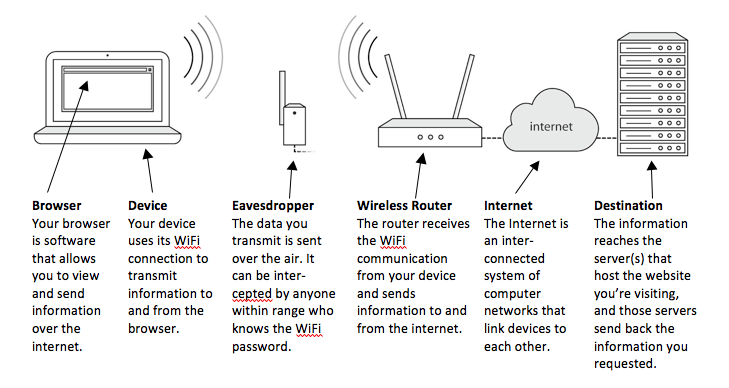All Categories
Featured
Table of Contents
- – Top Best Semantic Seo Tools Showroom Near Me
- – Top Seo For Semantic Search Money Can Buy
- – What Is A Good Price For A Semantic Markup In...
- – Which Is The Leading Structured Data For Sema...
- – What Is The Most Valuable Semantic Seo Ranki...
- – Which Is The Most Popular Optimizing For Sem...
- – How Do I Find A Semantic Seo Audits Service?
The internet is changing, ending up being increasingly more semantic. SEO is also altering and ending up being extra semantic. This is due to the fact that internet search engine have advanced and are relocating increasingly more in the direction of reading content online. Of program, that has additionally transformed the method we create content, specifically if we intend to rate much better in the internet search engine.
, the pioneer of the Internet, spoke of to represent the idea that all points in the cosmos are deeply interconnected. Intertwingularity is not generally recognized, individuals keep claiming they can make things deeply ordered, categorizable and sequential when they can not. Whatever is deeply intertwingled. Based upon the relationships between search intents, the search engine chooses a content ready by computing the distance between the vectors of definition.
It permits you to see, starting from a subject, all the entities that relate to that subject. By doing this you can clearly see which entities/concepts/ideas have actually already been covered on your site, and you can find new possibilities by comprehending what web content you can include and just how to create it.
Top Best Semantic Seo Tools Showroom Near Me
It is able to make your web content understandable for online search engine on the one hand and for your audience on the other. Structuring your material design highlights your web content and its underlying partnerships so that online search engine can acknowledge you among thousands of items of info, making you much more visible to users that fulfill the search intent related to your service.
In semantic SEO copywriting, an editor starts from a broader variety of subjects and customizes the content to consist of semantically appropriate terms and expressions that aid viewers understand a subject, comparable to reviewing web content in a wiki. From a material writing point of view, one sensible way to do this is to produce a vocabulary of terms and concerns bordering your target topic.
Top Seo For Semantic Search Money Can Buy
Discover extra concerning by seeing the by!.

Semantic search refers to the procedure of just how internet search engine comprehend and match key phrases to a searcher's intent in natural search results page. Prior to semantic search, search engines like Google ran like matchmakersaligning specific words in your inquiry with those specific words on pages. The outcomes were simple however commonly lacked deepness.
What Is A Good Price For A Semantic Markup In Seo?
It makes it possible for Google to supply quick, accurate answers to browse inquiries about real-world subjects. When you kind an inquiry word into Google, you're not just entering a series of words.
When you look for "Apple," Google doesn't just see a word that describes a fruit. It acknowledges Apple as a business and can provide related info. Like the name of its chief executive officer, Tim Cook, or its newest stock rates. Google announced the Hummingbird update in 2013. It was Google's response to the surge of voice searches, where inquiries ended up being a lot more conversational and nuanced.
Which Is The Leading Structured Data For Semantic Seo Company
By integrating NLP, Hummingbird allowed Google to move past plain keyword matching. It aided the search engine comprehend search intent, enhancing the odds that results would properly match the factor behind a customer's search.
Making it much more reliable at managing never-before-seen search queries. RankBrain considers more than just key words when evaluating a search question.
So it fetches results that match the key phrases and straighten with the general intent of supplying young puppy training suggestions. And if the user regularly looks for dog-related content, Google may focus on much more thorough training guidesrecognizing the customer's recurring passion in the subject. Incorporating modern technologies like the Expertise Graph, Hummingbird, and RankBrain, semantic search helps the Google formula translate and link information across a large web of information.
What Is The Most Valuable Semantic Seo Ranking Factors For The Price
The emphasis shifts from keyword option to a holistic strategy incorporating user intent, topical importance, and overall user experience. Producing content that attends to the searcher's needs with detailed information can enhance your SERP rankings. Below, we describe the patterns and techniques that consolidate the requirement for semantically educated web content. Later, we give actionable tips to transform these insights right into best practices.
A wider approach to content aligns much better with semantic search's shift away from precise key phrase matching and toward user intent. Content that covers search inquiries more completely not just pleases customers.
And five times greater than sites that take 10 secs to load. While technical SEO guarantees ideal internet site efficiency and availability, concentrating on user experience (UX) takes it a step even more. UX aims to produce a visually enticing, straightforward interface with engaging, top quality web content that motivates visitors to remain. Semantic search modern technology enables internet search engine to intend for results that supply the very best possible UX.
Which Is The Most Popular Optimizing For Semantic Search To Buy

All showcase Google's ability to deal with a subject query comprehensively. By understanding the context and intent behind individual inquiries, internet search engine can supply much more relevant information and possibly raise individual engagement. Personalization in search results page produces much better UX.Based on your previous search background and preferences as a customer, semantic search aids internet search engine tailor the results to fit your special demands and passions.
So it brings outcomes that match the keywords and line up with the general intent of providing young puppy training recommendations. And if the user frequently looks for dog-related material, Google may prioritize more comprehensive training guidesrecognizing the user's recurring passion in the topic. Incorporating technologies like the Expertise Chart, Hummingbird, and RankBrain, semantic search helps the Google algorithm translate and link information across a vast internet of information.
How Do I Find A Semantic Seo Audits Service?
The focus changes from keyword selection to an alternative technique encompassing individual intent, topical relevance, and total user experience. Developing content that addresses the searcher's needs with extensive info can improve your SERP positions. Below, we outline the trends and practices that consolidate the need for semantically notified web content. Later, we give workable pointers to turn these insights right into best practices.

A more comprehensive approach to content aligns much better with semantic search's shift away from precise key phrase matching and toward user intent. Content that covers search inquiries more thoroughly not only pleases individuals.
UX aims to create an aesthetically appealing, straightforward user interface with engaging, high quality material that encourages visitors to remain. Semantic search innovation enables search engines to aim for outcomes that give the ideal possible UX.
All showcase Google's capacity to deal with a subject query comprehensively. By recognizing the context and intent behind customer questions, online search engine can supply a lot more pertinent info and potentially enhance individual interaction. Customization in search results creates far better UX.Based on your previous search history and choices as a user, semantic search aids search engines tailor the outcomes to suit your special demands and rate of interests.
Table of Contents
- – Top Best Semantic Seo Tools Showroom Near Me
- – Top Seo For Semantic Search Money Can Buy
- – What Is A Good Price For A Semantic Markup In...
- – Which Is The Leading Structured Data For Sema...
- – What Is The Most Valuable Semantic Seo Ranki...
- – Which Is The Most Popular Optimizing For Sem...
- – How Do I Find A Semantic Seo Audits Service?
Latest Posts
Top-Rated Semantic Search Engine Optimization
Top Best Semantic Seo Tools Showroom Near Me
When Are The Top Semantic Content Creation Deals
More
Latest Posts
Top-Rated Semantic Search Engine Optimization
Top Best Semantic Seo Tools Showroom Near Me
When Are The Top Semantic Content Creation Deals